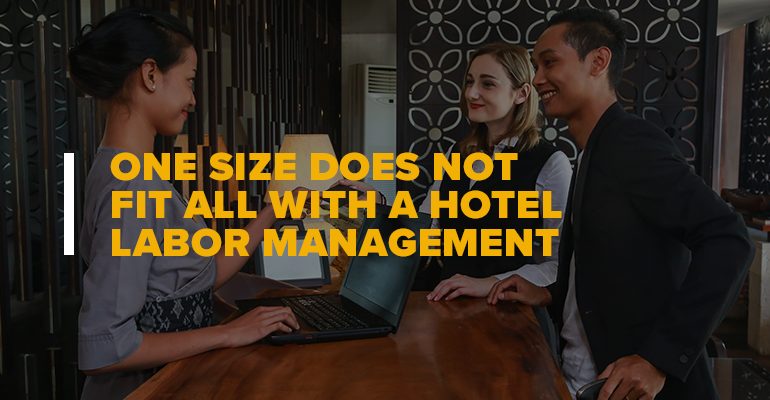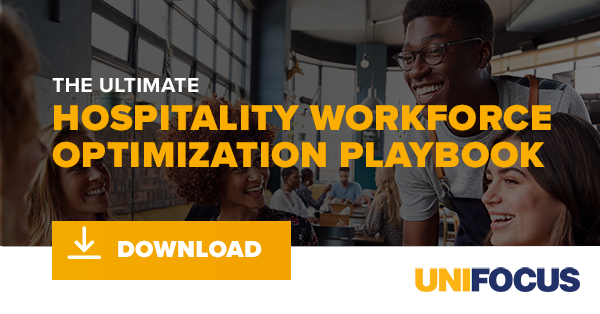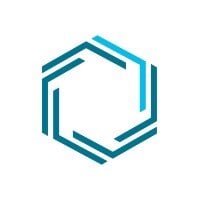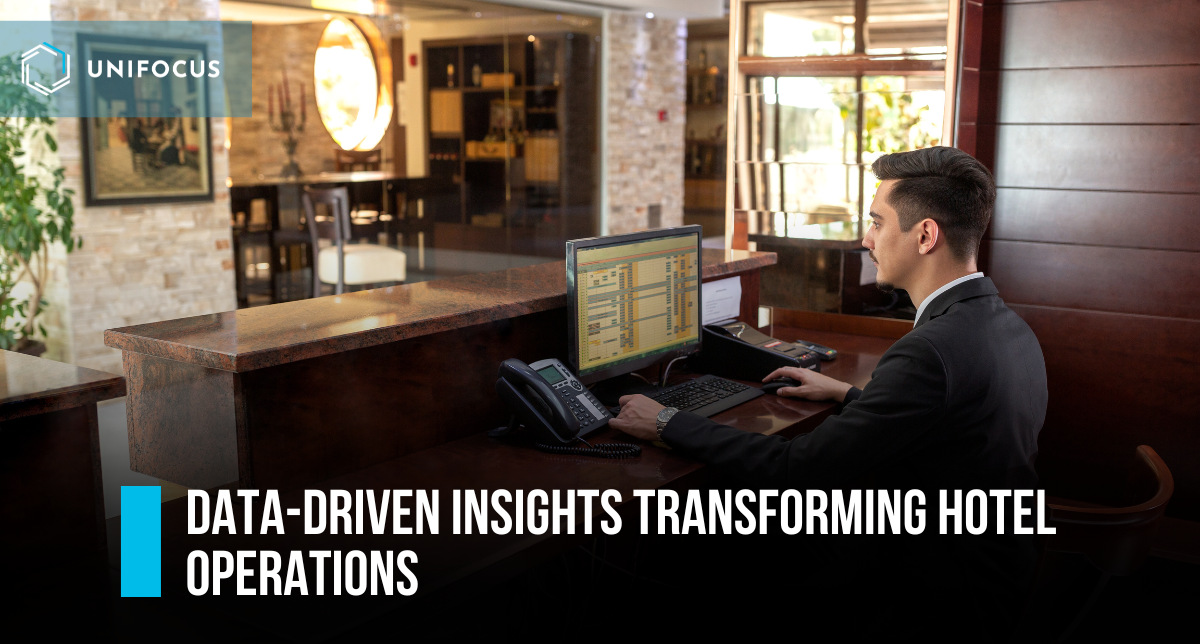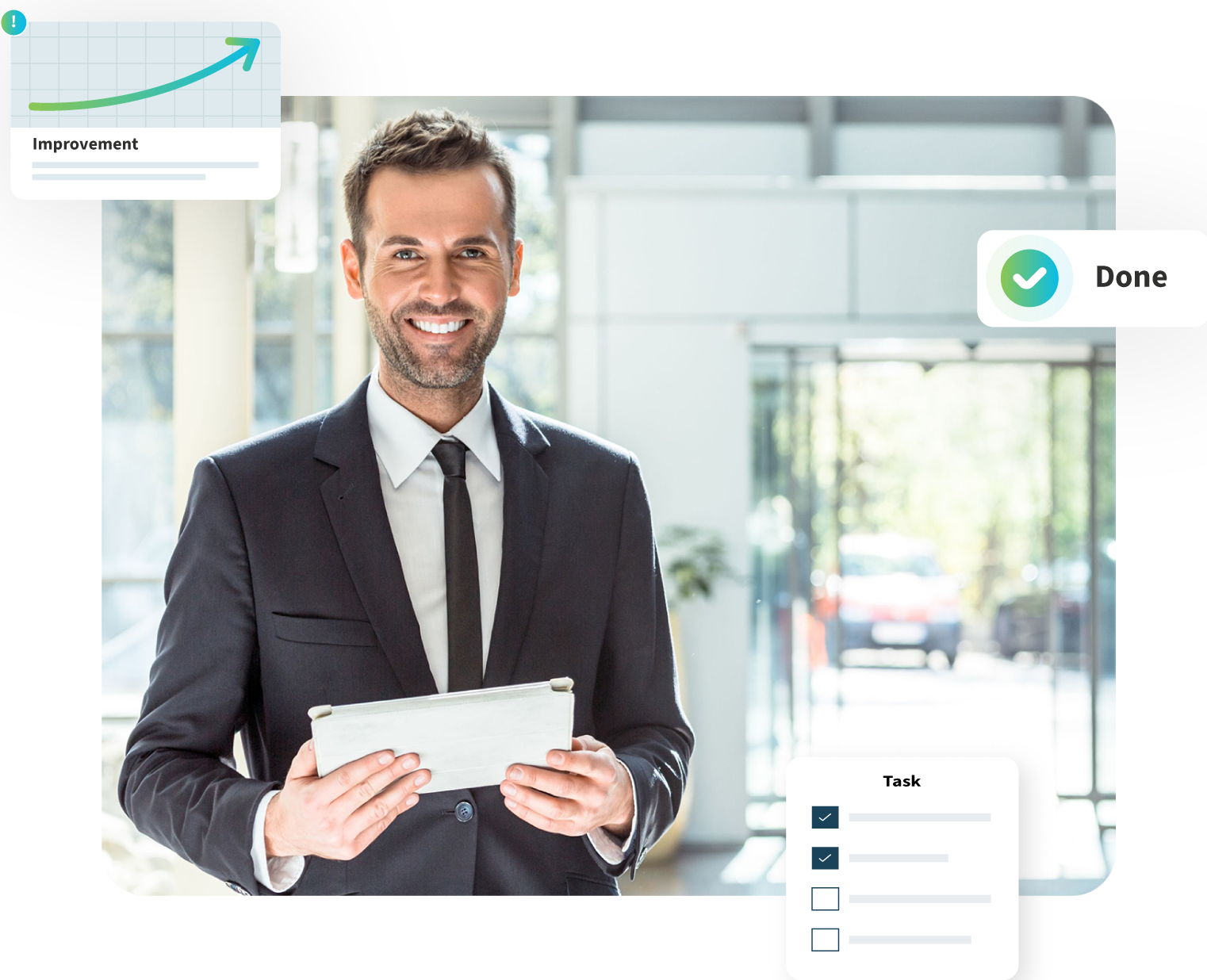The hospitality industry is as varied as it is dynamic. Guest expectations differ between hotel management companies and individual properties, where guests at a four-star luxury hotel have significantly different demands than at a roadside hotel for road-weary travelers. Therefore, using the same technology between those vastly different properties will eventually impede guest satisfaction, profitability, or both.
Put another way, there’s no such thing as a one-size-fits-all solution that is equally as effective in a two-star property as it is in a four-star or vice versa. While there is a trend within the industry that favors one-size-fits-all solutions for labor management, we urge hotel owners and operators to look at the bigger picture before jumping on the flavor of the week in hospitality tech. Failing to consider other options will eventually cause under-performance both from a cost and quality standpoint, where an operator pays for systems that don’t create any real value to the user.
Complex Operations Require Advanced Labor Management (LMS) Solutions
Just like in any industry, the complexity of operations should determine the best solution to use in a hotel property. A mom & pop diner, for instance, does not need a wine cellar, sommelier, full bar, cloth napkins and tablecloths, or most other features and services associated with a four-star restaurant. Investing in such things likely represents a sunk cost that a small diner will never recoup. Likewise, if a high-end restaurant tries to cut costs with paper napkins or installs a self-service beverage dispenser to streamline operations, they will fall well short of meeting their guests’ expectations.
The complexity of operations should determine the best solution to use in a hotel property.
The same premise holds true in hotels. Operations at a full-service hotel with 700 rooms, multiple on-site restaurants, banquet and conference facilities are far more complex than a limited-service property with 100 rooms and a free breakfast buffet. From a labor-management perspective, the limited-service hotel doesn’t need a full suite of products designed to track and measure every aspect of the hotel’s services. However, a scaled-back product that’s tailored to meet their needs would offer more insights and flexibility than a simple spreadsheet. Also, such a solution would still allow the hotel both to experience cost savings and encourage employee engagement & retention while meeting the needs and expectations of the guest.
A full-service property, however, needs to address an entirely different set of issues and requires a different solution than its limited-service counterpart. For example, a full-service, four-star hotel must be able to juggle numerous labor segments in real time, seamlessly managing staff across its several restaurants, banquet rooms, conference facilities, and, naturally, its guest rooms as well. Trying to implement the same software that would work well in a less complex property would severely limit a full-service property’s ability to meet demand across its operations. For something like a casino with thousands of rooms and even more moving parts, a one-size-fits-all labor-management solution jeopardizes quality guest service at every level of operations, profitability, and top line revenue.
A Cascading Effect
The hospitality industry is not homogenous. What might work well for one property could be a disaster for another. Any single model solution that claims it can effectively address all issues across the full spectrum of hotel properties in the marketplace is doing hotel owners and operators a sincere disservice. Complex operations require more advanced workforce management solutions, including systems that incorporate granular details to drive better forecasting, budgeting, scheduling, and more.
That’s not to say that an advanced solution must also be more difficult and cumbersome for an operator to use. The best systems combine utility with convenience to provide management with the best of all worlds. However, when a property with multiple components within its operations – be it a four-star resort, a large conference facility, a casino hotel, or anything of the sort – tries to use “one-size-fits-all” labor management software, it’s needlessly subjecting itself to a cascading series of shortcomings, all of which ultimately affect both employee engagement and guest satisfaction and the bottom line.
1. Forecasting
One of the most significant consequences of using insufficient tools is inaccurate forecasting. When a hotel uses a system that doesn't integrate enough data points to generate reliable forecasts, management can't look at future business volumes and align its staff with projected traffic. Inaccurate forecasting is one of the first in a series of misalignments that ultimately threaten the guest experience, top-line performance, and bottom-line results. For years now, room’s operations has used yield systems to project occupancy data. Therefore, for the rooms-only or rooms with a free breakfast operation, operations merely reacts to a “forecast.” The challenge arises when more revenue centers – restaurants, bars, catering, and others – come into play. This is one of the clear differentiators between a one-size-fits-all approach and more targeted technologies.
2. Labor Costs
Inadequate labor management solutions cannot create different labor standards based on the many key drivers of the business. That shortsightedness will inevitably result in continuously under or overstaffed shifts, each creating inefficiencies that drive labor costs higher. Also, misaligned staffing disengages an employee base, particularly when operations are understaffed, forcing additional tasks and responsibilities on workers during a shift. All these affect employee engagement. Employee engagement is a critical driver for guest satisfaction and revenue, further compounding the impact of poor forecasting and inadequate scheduling tools once it starts to fall.
Employee engagement is a critical driver for guest satisfaction and revenue.
3. Guest Satisfaction
Once an operator loses the ability to accurately forecast demand and create precise labor standards, they sacrifice the flexibility needed to meet guest expectations. The more complex a hotel’s operations, the faster this occurs, meaning a property with multiple revenue centers (see above) would likely feel the repercussions sooner than a hotel with fewer moving parts. However, any property above the limited-service level will eventually experience falling guest satisfaction rates.
4. The Intent to Return and Recommend
There’s an obvious correlation between guest satisfaction and the intent to return or recommend a property. If a hotel cannot meet guest expectations due to poor forecasting and scheduling, leaving shifts frequently understaffed, those guests are unlikely to return to the property or recommend it to someone else.
5. Revenue & Profitability
Poor guest satisfaction impedes top-line performance. Without a course correction with a more capable labor management system, lagging top-line performance becomes an ongoing trend rather than a one-time phenomenon. When coupled with the higher labor costs stemming from inaccurate forecasting and inadequate scheduling, those two dynamics merge at the bottom-line, negatively impacting a property’s profitability and, when left unchecked, its financial viability.
A Threat to Portfolios & Investors
Perhaps the most obvious threat from a one-size-fits-all solution aims squarely at high-end portfolios and their investors. The majority, if not all, of such portfolios are mixed and include full-service hotels with complex operations as well as limited-service hotels that don’t need an option to handle banquets or conference services. Trying to utilize a system that inhibits flexibility and foresight, particularly in an environment where labor costs are outpacing revenue growth, makes it far more challenging to generate lasting value for investors.
We advise hotel owners and operators to devote sufficient due diligence toward any labor management system before implementing it. For hotels with complex operations, while the premise of a one-size-fits-all solution might be appealing, the reality is anything but. Sacrificing impact and effectiveness for simplicity really doesn’t exist since, in the long run, a system not meeting day to day needs will either fall into disuse or, when forced to use, will create an additional burden on the management team. Instead, choose a labor management system that optimizes your workforce regardless of operational complexity and provides the agility to always meet demand, which, in turn, keeps guests and investors happy. The consequences of anything less are simply too high to risk.

